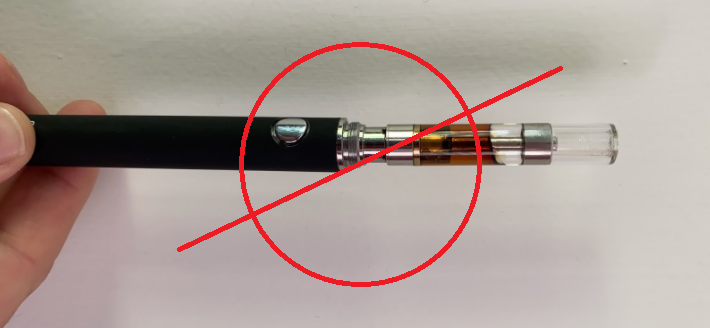Cannabis E-Liquid/Vape Juice Vape Pens—Use Caution, Possible Cause of Death
In 2019 there were several deaths that made the news suggesting the deaths were caused by the use of cannabis vape pens damaging the lungs.
These e-liquid (vape juice) version vape pens are the e-cigarette-type vape pens that are full of liquid in a cartridge that when heated by the cartridge holder “battery”, and inhaled, produce clouds and clouds and clouds of smoke… with the intoxication high.
The crisis of the early 2020’s eclipsed much of the hoopla of the 2019 vape pen deaths. A few regulations regarding sales of vape pens and cartridges were set up.
Some of the reports indicated oil droplets from the cartridge ingredients had infected the lungs. Other reports suggested other chemicals in the mix were burning the lungs.
Some of the oil targets of cause were a type of vitamin E oil as well as the more ubiquitous MCT oil (which is dangerous in other ways now) discussed elsewhere.
But no one really followed up, changed the industry. Indeed, these devices and the variety of materials used in them have exploded to new highs into a nascent marketplace of beginners and experienced users alike.
Consumers have used them as a convenient (though difficult to dose) way to medicate as well as to recreate.
These vape pens are still sold in various configurations and from a variety of sellers from the back alley black market to some of the finest dispensaries, in legal-everywhere CBD and Delta8 versions, to full marijuana concentrates.
Those online and in dispensaries will claim they can show you the Certificate of Analysis. They will claim the liquid formula is pure and “only” a concentrate of the main ingredient.
But when you look at the provided Certificate, you realize the date on the test is from 2018 (and it’s 2022)…and the product tested is only the main ingredient as a solid concentrate but the actual product, made into a liquid to vaporize in a pen is nowhere mentioned.
Where is the test of the other ingredients? The concentrate is a solid. It shows as a solid in the lab photo. But the device ingredients are liquid.
The marketing words on the website, or in the smoke shop, or gas station or medical dispensary might use all the correct words and that “this is the only ingredient”—but no one is really monitoring or testing all the now thousands and thousands of brands and products.
So with that said, you have no way of knowing what is in the liquid you just bought that you are now lighting on fire (or more politely, “heating”) and inhaling into your lungs and body.
Please be careful. Poisons in the cannabis industry (and food and supplement and medical industries) are rampant.
Some online instructions tell the consumer how to make their own cannabis oil– but it’s made with glycerin and alcohol or propylene glycol and alcohol.
Who knows physiologically what effect those have in the lungs?
These vape pens don’t work well with regular oils, like coconut oil.
And that natural and non-chemicalized coconut oil is a preferred real food. Well. THAT’S a real FOOD, not a lung inhalant!
Which is why the industry started using vitamin E oils, synthetic or otherwise, and MCT oils. And people were dropping dead.
There is ice hash or dry plant involved. Often instead are concentrates or extracts.
And no easy way for a consumer to test how much medicine is in one puff or the whole cartridge.
And regardless if bought in a medical dispensary with old or new Certificates, or bought from a friend of a friend of a friend who works in a smoke shop, there definitely is no way to tell if your medicine will be the draw that kills you.
Most of these products are targeted at the recreational crowd, but those with truly serious health and medical and painful maladies are falling prey and don’t need additional injury on top of the current ones.
There are better ways to do medicine.
Just say NO to liquid vape pens.



